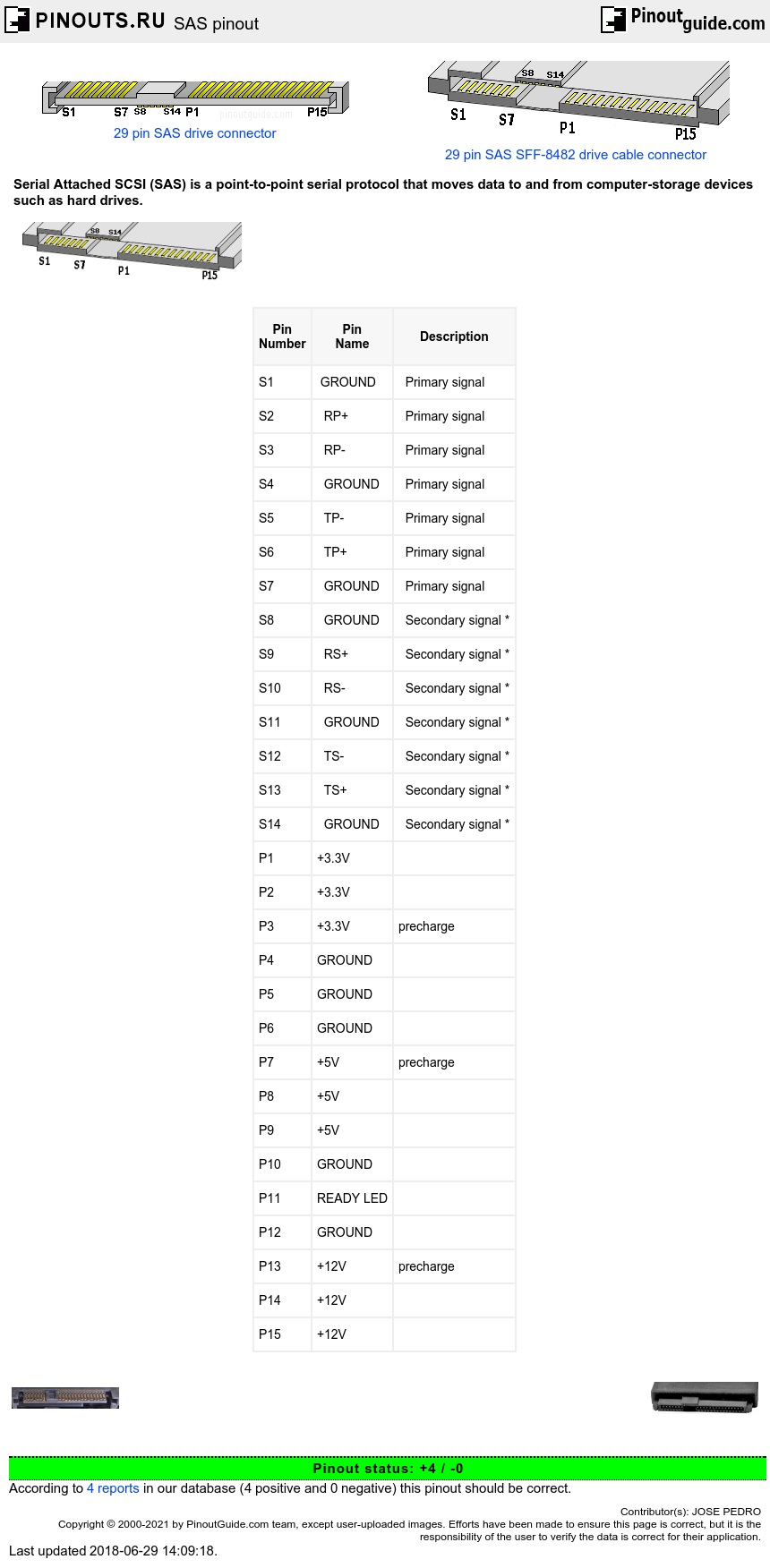SAS replaces the older Parallel SCSI (Parallel Small Computer System Interface) and, like its predecessor, uses the standard SCSI command set. SAS offers optional compatibility with Serial ATA (SATA), versions 2 and later. This allows the connection of SATA drives to most SAS backplanes or controllers. The reverse, connecting SAS drives to SATA backplanes, is not possible. There are more than six different physical SAS connectors variants.
SAS SFF-8482 internal connector pinout
| Pin Number |
Pin Name |
Description |
|---|---|---|
| S1 | GROUND | Primary signal |
| S2 | RP+ | Primary signal |
| S3 | RP- | Primary signal |
| S4 | GROUND | Primary signal |
| S5 | TP- | Primary signal |
| S6 | TP+ | Primary signal |
| S7 | GROUND | Primary signal |
| S8 | GROUND | Secondary signal * |
| S9 | RS+ | Secondary signal * |
| S10 | RS- | Secondary signal * |
| S11 | GROUND | Secondary signal * |
| S12 | TS- | Secondary signal * |
| S13 | TS+ | Secondary signal * |
| S14 | GROUND | Secondary signal * |
| P1 | +3.3V | |
| P2 | +3.3V | |
| P3 | +3.3V | precharge |
| P4 | GROUND | |
| P5 | GROUND | |
| P6 | GROUND | |
| P7 | +5V | precharge |
| P8 | +5V | |
| P9 | +5V | |
| P10 | GROUND | |
| P11 | READY LED | |
| P12 | GROUND | |
| P13 | +12V | precharge |
| P14 | +12V | |
| P15 | +12V |
(*) S8 through S14 are no-connects on single-port implementations
Advantages of SAS over parallel SCSI
- The SAS bus operates point-to-point while the SCSI bus is multidrop. Each SAS device is connected by a dedicated link to the initiator, unless an expander is used. If one initiator is connected to one target, there is no opportunity for contention; with parallel SCSI, even this situation could cause contention.
- Has no termination issues and does not require terminator packs.
- Eliminates clock skew.
- Allows up to 65,535 devices through the use of expanders, while Parallel SCSI has a limit of 8 or 16 devices on a single channel.
- Allows a transfer speed 3, 6 or 12 Gbit/s on each initiator-target connection.
- Feature dual ports, allowing for redundant backplanes or multipath I/O;
- May connect to SATA devices, either directly connected using native SATA protocol or through SAS expanders using Serial ATA Tunneling Protocol (STP).
- Both SAS and parallel SCSI use the SCSI command set
Advantages of SAS over SATA
- SAS protocol provides for multiple initiators in a SAS domain, while SATA has no analogous provision.
- Most SAS drives provide tagged command queuing, while most newer SATA drives provide native command queuing.
- SATA uses a command set that is based on the parallel ATA command set. SAS uses the SCSI command set, which includes a wider range of features like error recovery, reservations and block reclamation.
- SAS hardware allows multipath I/O to devices while SATA (prior to SATA 2.0) does not. SAS error-recovery and error-reporting uses SCSI commands, which have more functionality than the ATA SMARTcommands used by SATA drives.[8]
- SAS uses higher signaling voltages (800–1,600 mV for transmit, and 275–1,600 mV for receive) than SATA (400–600 mV for transmit, and 325–600 mV for receive). SAS can use cables up to 10 m long, whereas SATA has a cable-length limit of 1 m or 2 m for eSATA.
Benefits of SATA over SAS
- SATA is marketed as a general-purpose successor to parallel ATA and has become common and inexpensive solution for the consumer market, whereas the expensive SAS is more suitable only for critical server applications.
SAS components
A typical Serial Attached SCSI system consists of the following basic components:
An initiator: a device that originates device-service and task-management requests for processing by a target device and receives responses for the same requests from other target devices. Initiators may be provided as an on-board component on the motherboard or as an add-on host bus adapter.
A target: a device containing logical units and target ports that receives device service and task management requests for processing and sends responses for the same requests to initiator devices. A target device could be a hard disk or a disk array system.
A service delivery subsystem: the part of an I/O system that transmits information between an initiator and a target. Typically cables connecting an initiator and target with or without expanders and backplanes constitute a service delivery subsystem.
Expanders: devices that form part of a service delivery subsystem and facilitate communication between SAS devices. Expanders facilitate the connection of multiple SAS End devices to a single initiator port.
SAS specifications
- SAS-1: 3.0 Gbit/s, introduced in 2004
- SAS-2: 6.0 Gbit/s, available since 2009
- SAS-3: 12.0 Gbit/s, available since 2013
- SAS-4: 22.5 Gbit/s called 24G, standard completed in 2017
Various SAS connectors
| Int/ Ext |
SFF Codename |
Link to pinout | Connector drawing | Connector Photo |
|---|---|---|---|---|
| i n t e r n a l |
SFF-8482 | 29 pin SFF-8482 SATA-compatible SAS connector |  |
 |
| SFF-8484 | 32 pins SAS 4i internal SFF-8484 connector |  |
 |
|
| SFF-8630 |  (at the SAS device) |
|||
| SFF-8654 |  |
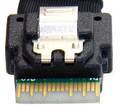 |
||
| e x t e r n a l |
SFF-8643 |
36 pins Mini-SAS HD SFF-8643 connector | 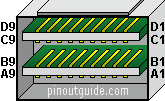 |
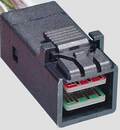 |
| SFF-8644 | 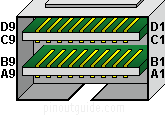 |
 |
||
| SFF-8087 |  |
 |
||
| SFF-8470 |  |
 |





 correct
correct incorrect
incorrect